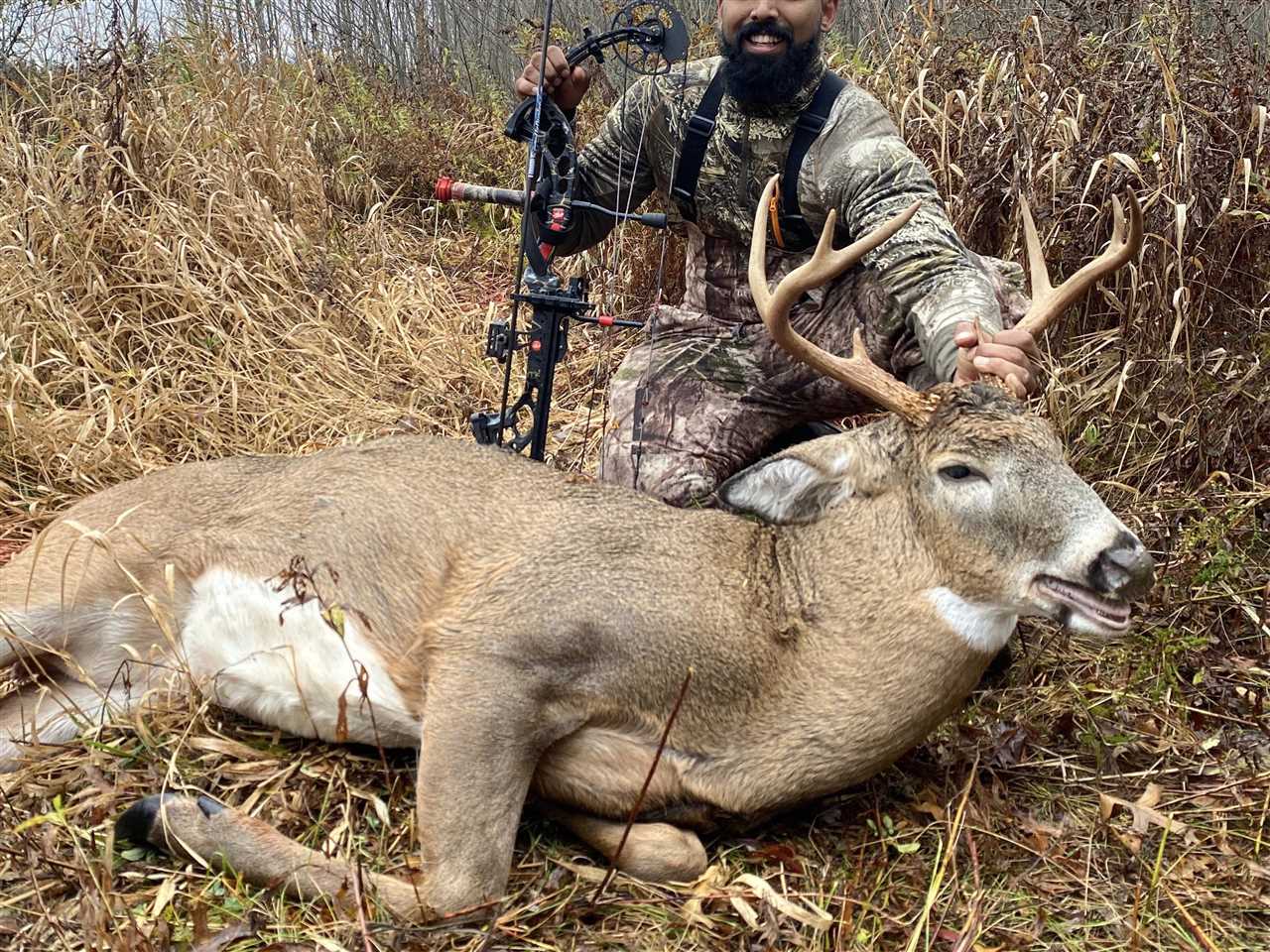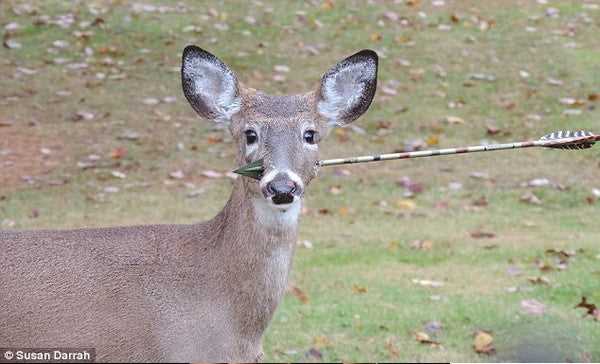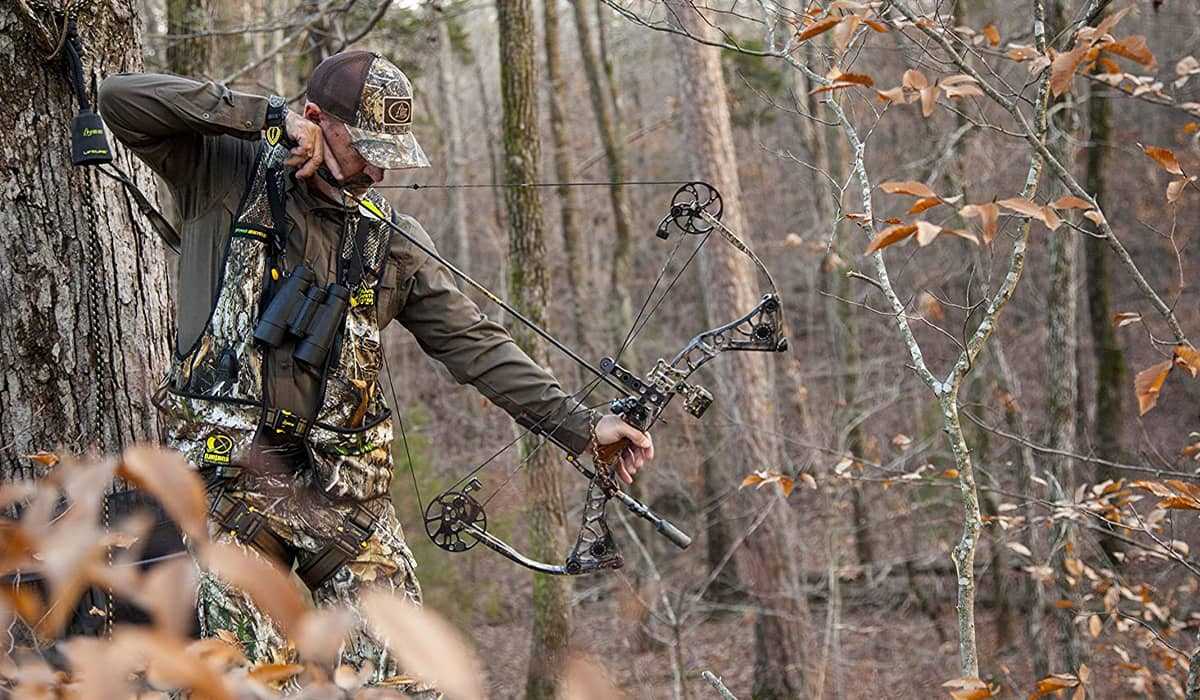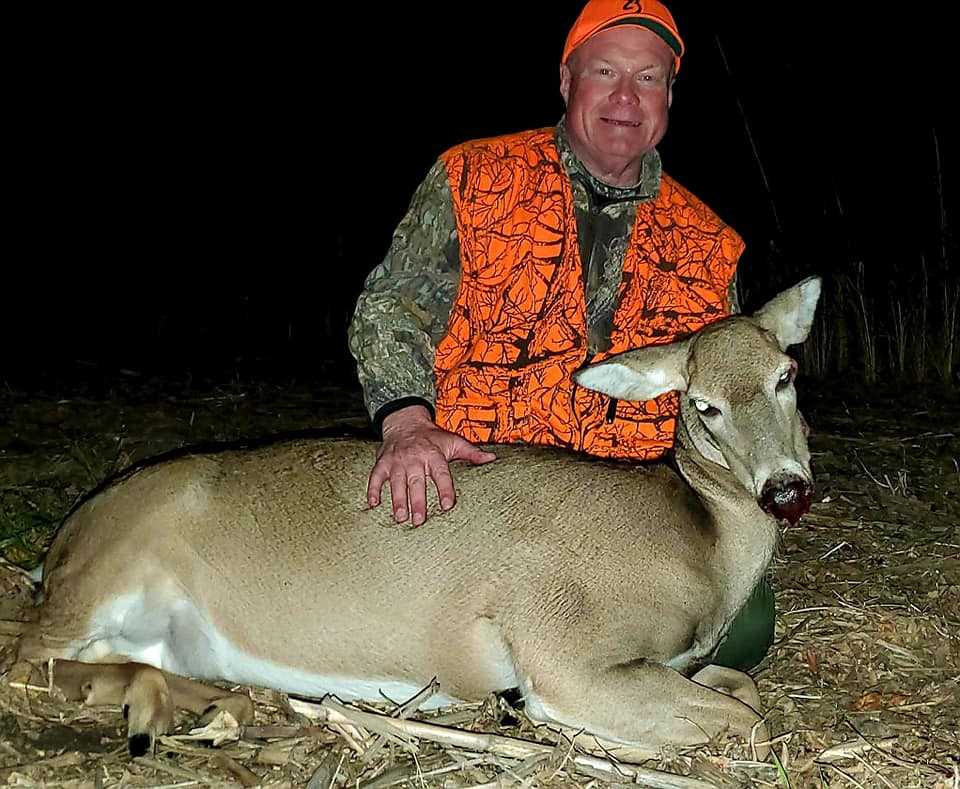Contents
Exploring the Ethical Implications of Bow Hunting: Is using a bow and arrow for hunting a humane method?

A discussion on the ethics of hunting raises important questions about the treatment of animals and the impact of human actions on wildlife. When it comes to hunting, there are a variety of methods employed, with archery being one of the oldest and most traditional. Bow hunting, as it is commonly known, involves the use of a bow and arrow to pursue and kill game animals. This raises the question: Is bow hunting humane?
While some argue that bow hunting is a more humane alternative to other forms of hunting, it is important to consider the welfare of animals involved. Advocates for bow hunting argue that the use of a bow and arrow allows for a more precise and controlled shot, reducing the risk of causing unnecessary suffering to the animal. Additionally, the quiet nature of archery allows for a closer and more intimate connection with the natural surroundings, enhancing the hunting experience.
However, opponents of bow hunting emphasize the potential for injury and prolonged suffering that can result from an inaccurate shot. The use of a bow and arrow requires exceptional skill and accuracy, and even with the best of intentions, there is always a risk of non-lethal wounds, which can lead to prolonged suffering and an inhumane death for the animal. Critics argue that the potential for error inherent in archery makes it an ethically questionable method of hunting.
Another important consideration is the impact of bow hunting on wildlife populations. Proponents of bow hunting argue that it helps control animal populations and prevents overpopulation, which can lead to ecosystem imbalance and an increase in human-animal conflicts. However, opponents question the effectiveness of bow hunting in achieving these goals and raise concerns about the selective targeting of certain species, potentially disrupting natural predator-prey dynamics.
Is Bow Hunting Humane?

Bow hunting is a popular method of hunting game, but the question remains: is it humane? Bow hunting involves using a bow and arrow to kill wildlife, often animals such as deer or elk. This raises ethical concerns about the treatment of animals and the overall impact on wildlife populations.
Proponents of bow hunting argue that it can be a more ethical and humane way to hunt compared to other methods, such as using guns. They believe that the slower and quieter nature of bow hunting gives animals a better chance to escape, making it a fairer contest between hunter and prey. Additionally, they contend that the use of a bow and arrow allows for more precise targeting, potentially resulting in a quicker and cleaner kill.
However, critics argue that bow hunting can still cause unnecessary suffering to animals. Even with precise aim, arrows may not always result in an instant kill, leaving animals to endure prolonged pain and suffering. They also express concern about the increased risk of non-lethal injuries, such as arrows that miss vital organs or arrows that do not penetrate deeply enough to cause a quick death.
Another factor to consider is the impact on wildlife populations. Bow hunting, like any form of hunting, can have consequences for animal populations if not properly regulated. Overhunting or targeting of vulnerable species can lead to imbalances in ecosystems and potentially threaten the survival of certain animals.
In conclusion, the question of whether bow hunting is humane is a complex one. While some argue that it can be a more ethical and precise method compared to other hunting techniques, others express concern about the potential for unnecessary suffering and the impact on wildlife populations. Striking a balance between the interests of hunters and the welfare of animals requires careful consideration of ethics and responsible wildlife management.
Examining the Ethical Implications
Hunting has long been a part of human history, providing sustenance and survival for various communities. However, as the population has grown and our understanding of wildlife conservation has improved, the ethical implications of hunting have come under scrutiny. This is especially true when it comes to using a bow and arrow, a practice known as bow hunting.
Archery itself is a skill that has been practiced for centuries and is considered a form of art and sport. However, when it comes to using archery for game hunting, the ethical considerations become more complex. While bow hunting can be argued to be more humane than other forms of hunting, such as using firearms, it still raises questions about the well-being of animals and the potential for unnecessary suffering.
One of the primary concerns with bow hunting is the potential for animals to be wounded rather than killed instantly. Unlike firearms, which have the ability to deliver a swift and fatal shot, arrows may not always achieve the same result. This can lead to animals suffering unnecessarily and, in some cases, escaping with severe injuries. It is essential for hunters to have the necessary skill and accuracy to make clean kills, minimising the suffering of the game.
Another ethical consideration is the potential impact on wildlife populations. With bow hunting, there is a higher likelihood of a missed shot or a non-lethal hit, as compared to hunting with firearms. This raises concerns about overhunting and the potential for disrupting the balance of ecosystems. Adequate knowledge of animal populations and responsible hunting practices are crucial to ensure that hunting remains sustainable and does not harm wildlife populations.
Furthermore, the ethics of bow hunting also extend to the motivations and attitudes of the hunters themselves. It is essential to differentiate between hunting for subsistence and hunting for recreation. While hunting for the purpose of obtaining food can be seen as a more ethically justifiable form of hunting, hunting purely for sport and trophy poses more significant ethical dilemmas. The motive behind bow hunting plays a role in determining its ethical implications.
In conclusion, bow hunting raises several ethical concerns regarding the well-being and conservation of animals. Ensuring that animals are killed swiftly and humanely, minimizing unnecessary suffering, understanding and conserving wildlife populations, and examining the motives behind bow hunting are all necessary to navigate the ethical implications of this practice. Ultimately, it is vital for hunters to consider the greater impact of their actions on both individual animals and the ecosystem as a whole when engaging in bow hunting.
Understanding the Ethics of Hunting

The ethics of hunting are a complex and nuanced topic that require careful consideration. One area of debate is whether bow hunting is a humane method of hunting. Bow hunting involves using a bow and arrow to kill animals, and many argue that it is a more ethical alternative to firearms due to the potential for a quicker, more precise kill.
When considering the ethics of hunting, it is important to consider the impact on the animals and their welfare. While bow hunting can be seen as more humane than firearms, it still poses risks to wildlife. Even with skilled archery, there is potential for the animal to suffer if the shot is not accurate. It requires a high level of skill and practice to consistently kill animals swiftly and effectively.
However, proponents of bow hunting argue that it is a more ethical way to engage with nature and wildlife. It requires a close bond with the environment and a deep understanding of animal behavior. Bow hunting enthusiasts often view it as a way to connect with their primal instincts and participate in a more natural, balanced ecosystem.
Another ethical consideration is the impact hunting has on wildlife populations. Hunting can help manage animal populations and prevent overpopulation, which can lead to habitat degradation and an increase in disease. By carefully selecting targets and adhering to regulations, hunters can play a role in maintaining a healthy balance of wildlife species.
| Proponents of Bow Hunting | Opponents of Bow Hunting |
|---|---|
| View it as a way to connect with nature and wildlife | Raise concerns about the potential for inaccurate shots |
| Argue it is a more ethical alternative to firearms | Believe it still poses risks to wildlife |
| Emphasize the importance of skill and practice | Advocate for stricter regulations and oversight |
In conclusion, the ethics of bow hunting are a complex and multifaceted issue. While some argue that it is a more humane alternative to firearms, others raise concerns about the potential for inaccurate shots and animal suffering. Understanding the impact on animals and wildlife populations is crucial in forming an informed opinion on the ethics of bow hunting.
Considering the Role of Technology

The use of technology in archery hunting raises important ethical considerations and challenges. While bow hunting is often seen as a more humane form of hunting compared to hunting with firearms, advancements in technology have resulted in the development of highly effective, long-range bows and arrows.
On one hand, the use of advanced bows and arrows can increase the chances of a clean and quick kill, minimizing the suffering of game animals. With improved accuracy and range, hunters can potentially deliver a more precise shot, avoiding unnecessary suffering and ensuring a cleaner harvest.
However, the increased effectiveness of these technologies also raises concerns about the fairness and sportsmanship of the hunt. Some argue that the use of long-range bows and arrows makes it easier for hunters to target and kill game from a distance, potentially reducing the need for skill, patience, and close encounters with wildlife.
The broadheads used in archery hunting are designed to cause significant damage to vital organs, and a well-placed shot can result in a quick and humane kill. However, there is always the risk of a less accurate shot, which can lead to wounded animals that may suffer extended periods before being located and dispatched.
Furthermore, the use of technology in hunting raises questions about the impact on wildlife populations. If hunters are more successful in their kills due to advanced bows and arrows, there is a potential for an overharvesting of game animals, which can have negative consequences for species conservation and ecosystem balance.
As technology continues to advance, it is crucial to consider its implications in bow hunting. Finding a balance between ensuring humane kills and preserving the ethics of fair chase is essential. Responsible hunters and authorities must continually evaluate the use of technology in hunting to ensure the welfare of both game animals and the ecosystem as a whole.
Evaluating the Effectiveness

The ethics of bow hunting are often a subject of debate among wildlife enthusiasts and animal rights activists. Bow hunting involves using a bow and arrow to hunt game, which raises questions about the humane treatment of animals and the effectiveness of this method compared to other hunting techniques.
Bow hunting has a long history and is considered by many to be a traditional and skillful way of hunting. However, when it comes to evaluating the effectiveness of bow hunting, there are several factors to consider.
Firstly, the accuracy and precision required in archery make it necessary for hunters to practice extensively in order to be effective. A well-placed arrow can deliver a quick and humane kill, minimizing suffering for the animal. However, an improperly aimed shot can result in a wounded animal that escapes and may suffer a slow and painful death.
Secondly, the range of a bow and arrow is considerably shorter than that of a firearm. This means that bow hunters must get closer to their game, requiring careful stalking and stealth skills. This close proximity to the animal may result in a quicker kill, as vital organs can be targeted more easily. However, it can also increase the chances of a missed shot or an insufficiently lethal hit.
Lastly, the type of broadhead used on the arrow can greatly impact the effectiveness of bow hunting. Broadheads are the cutting tips of arrows and are designed to cause damage and ultimately kill the animal. There are different styles of broadheads, such as fixed-blade and mechanical, each with their own advantages and disadvantages. Choosing the right broadhead for the intended game is crucial for a successful and ethical hunt.
In conclusion, evaluating the effectiveness of bow hunting involves considering factors such as accuracy, range, and choice of broadheads. While bow hunting requires skill and precision, it can be an effective and humane method of hunting when done correctly. However, it also presents unique challenges that may increase the risk of incomplete kills or unnecessary suffering for animals. It is important for hunters to continually educate themselves on ethical hunting practices and strive to improve their skills to maximize the effectiveness and minimize the potential harm to wildlife.
Exploring the Impact on Animal Welfare

Archery, as a method of hunting, raises important questions about the ethics and impact on animal welfare. While some argue that bow hunting is a humane way to hunt, others question the ethics of using such a weapon to kill animals. This delicate balance between the pursuit of the hunt and the well-being of the animals is a topic of ongoing discussion.
One of the primary concerns with bow hunting is the potential for the animals to suffer prolonged, painful deaths. Unlike firearms, which can deliver a quick, efficient kill, arrows may not always provide an immediate end to the animal’s life. This raises questions about the responsibility of the hunter to ensure a humane kill and minimize suffering.
Advocates of bow hunting argue that it requires a high level of skill and precision, allowing for a more controlled shot placement. They claim that properly placed shots can result in a quick and clean kill, minimizing suffering. Additionally, they argue that bow hunting promotes closer proximity to the animals, demanding a higher level of respect and understanding of their behaviors and habitat.
On the other hand, opponents of bow hunting argue that the lower velocity and potential for less accurate shots can increase the likelihood of animals being injured but not killed outright. This can lead to prolonged suffering as the animals try to escape and recover. Additionally, they question the fairness of using a weapon that requires animals to be within a closer range, potentially giving them an unfair advantage in the pursuit of game.
To address these concerns, advocates of bow hunting stress the importance of practicing and honing archery skills to ensure accuracy and effective shot placement. They also emphasize the need for hunters to regularly assess their gear and equipment, ensuring that arrows are sharp and properly tuned. By prioritizing accuracy and efficacy, they believe that bow hunting can be a humane and ethical approach to hunting.
However, it is crucial to consider the individual hunters and their level of skill and experience. In inexperienced hands, bow hunting may pose a greater risk to animal welfare. Proper education and training on ethical hunting practices are essential to mitigate the potential negative impacts on animal welfare.
In conclusion, the question of whether bow hunting is a humane method of hunting holds many complexities. It involves weighing the skill and precision required of the hunter, the potential risks and benefits to animal welfare, and the broader ethical implications of using a bow and arrow to harvest game. Ongoing discussions and advancements in hunting practices aim to ensure that the pursuit of the hunt is done with respect for animals and their welfare.
Comparing the Suffering of Animals

When it comes to wildlife hunting, there are various methods that can be used, including archery. Hunting is a practice that has been a part of human existence for centuries, but the ethics surrounding it have always been a topic of debate. In recent years, the use of a bow and arrow for hunting, commonly known as bow hunting, has gained popularity among hunters.
One of the main arguments for bow hunting is that it can be a more humane alternative to other forms of hunting. Proponents of bow hunting argue that it allows for a more precise shot, giving the hunter a greater chance of taking down the game quickly and efficiently. They claim that the use of a bow can result in a more instant kill, minimizing the suffering of the animals.
However, opponents of bow hunting question the claim that it is more humane. They argue that bow hunting can actually be more inhumane due to the potential for animals to be injured rather than killed outright. Unlike other forms of hunting, where a gunshot can cause immediate death, an arrow may not always result in an instant kill. This can lead to a wounded animal suffering unnecessarily before it is eventually brought down.
Furthermore, critics argue that bow hunting requires a higher level of skill and accuracy compared to other forms of hunting. This raises concerns about the potential for missed shots or poorly placed shots, which can exacerbate the suffering of the animals. They also question whether the use of a bow and arrow can consistently deliver enough force to guarantee a quick and ethical kill.
Ultimately, the question of whether bow hunting is humane or not is a complex one. While some argue that it can be a more humane method of hunting, others believe that it poses greater risks for the suffering of animals. As with any form of hunting, it is important for hunters to consider the ethics and impact of their actions on the animals they target.
In conclusion, the topic of bow hunting and its ethical implications is a contentious one. The suffering of animals is an important factor to consider when evaluating the ethics of using a bow and arrow for hunting. It is crucial for hunters and those interested in wildlife conservation to engage in an open, honest, and informed discussion about the ethics of bow hunting and its impact on animals.

A skilled hunter, dedicated conservationist, and advocate for ethical practices. Respected in the hunting community, he balances human activity with environmental preservation.
